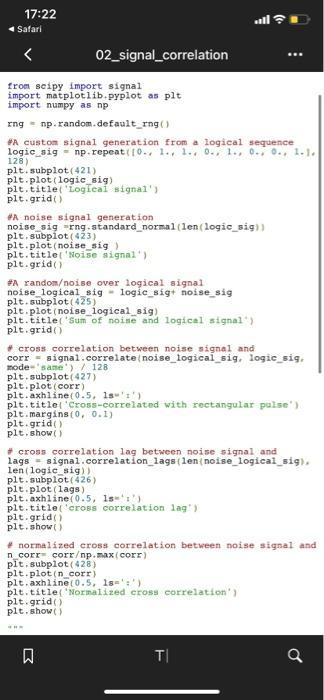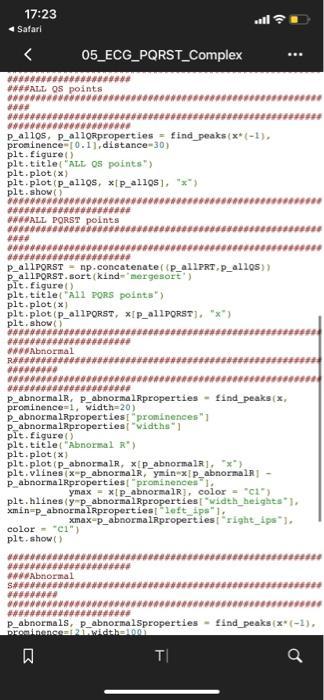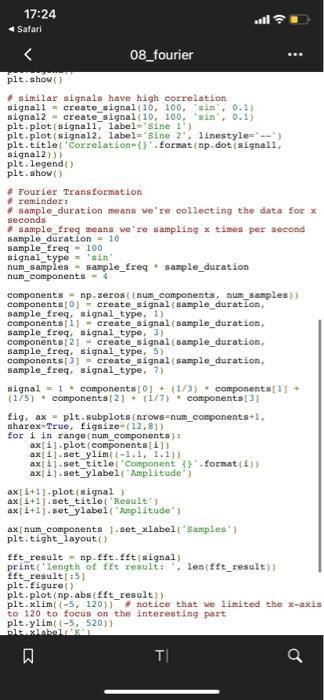Answered step by step
Verified Expert Solution
Question
1 Approved Answer
1- Perform smoothing by using the scipy ECG signal used in the shared codes as an example. For smoothing, use the Simple Moving Average, Exponential
1- Perform smoothing by using the scipy ECG signal used in the shared codes as an example. For smoothing, use the Simple Moving Average, Exponential Moving Average, Triple Exponential Moving Average, Savitzky-Golay and Ensemble Average methods. Find the PQRST points after smoothing. 2- Examine the entire ECG signal with STFT. Prepare the program that automatically labels the blank (no beat) regions, normal beat regions and abnormal beat regions on the STFT graph.

















00_basic_operatins # -*- coding: utf-8 eauthor: A.c. SECKIN from scipy.misc import electrocardiogram import matplotlib.pyplot as plt import numpy as np #get ready to use ECG signal ecg = electrocardiogram () #sampling frequency 360Hz fs - 360 # sample abnormal signal X = ecg[17000:19000] # generating time axis values tx = np.arange (x.size) / fs plt.figure () plt.subplot( 321) plt.title( "Raw signal") plt.plot (tx, x) plt.grid() modulator=np.sin(2*np.pi+3*tx) plt.subplot( 322) plt.title("Modulator Signal") plt.plot (tx, modulator) y - x*modulator plt.subplot (323) plt.title( "multipled") plt.plot (tx, y) plt.grid() y = x+modulator plt.subplot (324) plt.titie("addtion") plt.plot (tx, y) plt.grid() #gradient or derivative of the signal dx=np.gradient (x) # generating time axis values tdx = np. arange (x.size) / fs plt.figure() plt.title( "Gradient/derivative") #plt.plot (tdx, dx) plt.plot (tx, x, "r", tdx, dx, "b") plt.grid()
Step by Step Solution
★★★★★
3.47 Rating (160 Votes )
There are 3 Steps involved in it
Step: 1
Solution import numpy as np def softmaxx ex npexpx npmaxx return ex exsumaxis0 def sigmoidx return 1 1 npexpx def initializeadamparameters Initializes v and s as two python dictionaries with keys dW1 ...
Get Instant Access to Expert-Tailored Solutions
See step-by-step solutions with expert insights and AI powered tools for academic success
Step: 2

Step: 3

Ace Your Homework with AI
Get the answers you need in no time with our AI-driven, step-by-step assistance
Get Started


